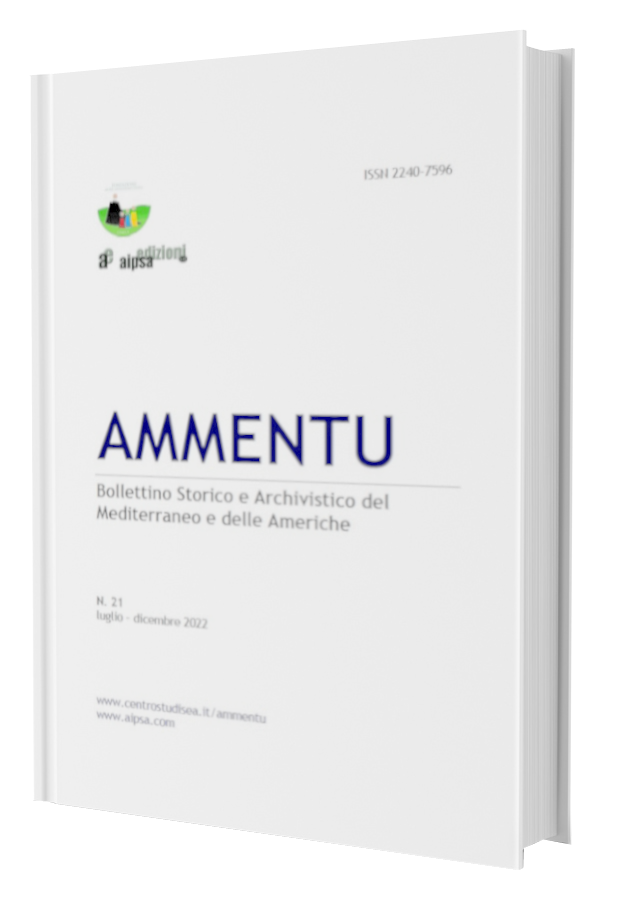Historical notes for a local project. The hill of Monreale, the thermal baths of Santa Mariaquas and the mines of Sardara
DOI:
https://doi.org/10.19248/ammentu.447Resumen
The Monreale hill has a significant historical and simboli value for the populations of the surrounding settlements. Frequented since the Nuragic age, it has gone through all the historical phases of the island. Evidence of this is the castle, built between the 13th and 14th centuries, a defensive bastion of the giudicato of Arborea and later a tangible sign of the feudal power of the Carroz di Quirra.
In the 19th century, mining activities developed in the hills, reaching their peak in the 20th century with the Monreale and Perda Lai mines. With the crisis of the 1970s, which affected the entire mining sector, the two mines closed down, leaving us with a great heritage of industrial archaeology.
At the base of Monreale there is the thermal area of Santa Mariaquas, with the spring complex and the 19th century building incorporating the Roman baths. Frequented both in Roman times and during the Judicial period, the history of the thermal baths had its revival in the 19th century, when, after several failed attempts, the entrepreneur Filippo Birocchi and the engineer Giorgio Asproni junior intervened. The early 20th century saw the birth of the new spa, which changed hands in the 1920s to the Rodriguez family and in the 1950s to the Mossa family.
The valorisation of the area must be seen in its historical, archaeological and environmental complexity, with innovative and sustainable tools, such as the creation of an eco museum or a historical, cultural and natural park.
Descargas
Publicado
Número
Sección
Licencia
Apunte sobre copyright
El aviso de copyright que consta más abajo figurará entre la información sobre la revista y en los metadatos de cada uno de los artículos publicados. Si bien cada revista puede determinar con total libertad la forma y el fondo del acuerdo de copyright que suscribe con sus autores, el Public Knowledge Project recomienda el uso de una licencia de Creative Commons. A tales efectos, proporciona un ejemplo que puede copiarse y pegarse en el espacio de más abajo para aquellas revistas que (a) ofrecen acceso abierto, (b) ofrecen acceso abierto diferido o (c) que no ofrecen acceso abierto.









